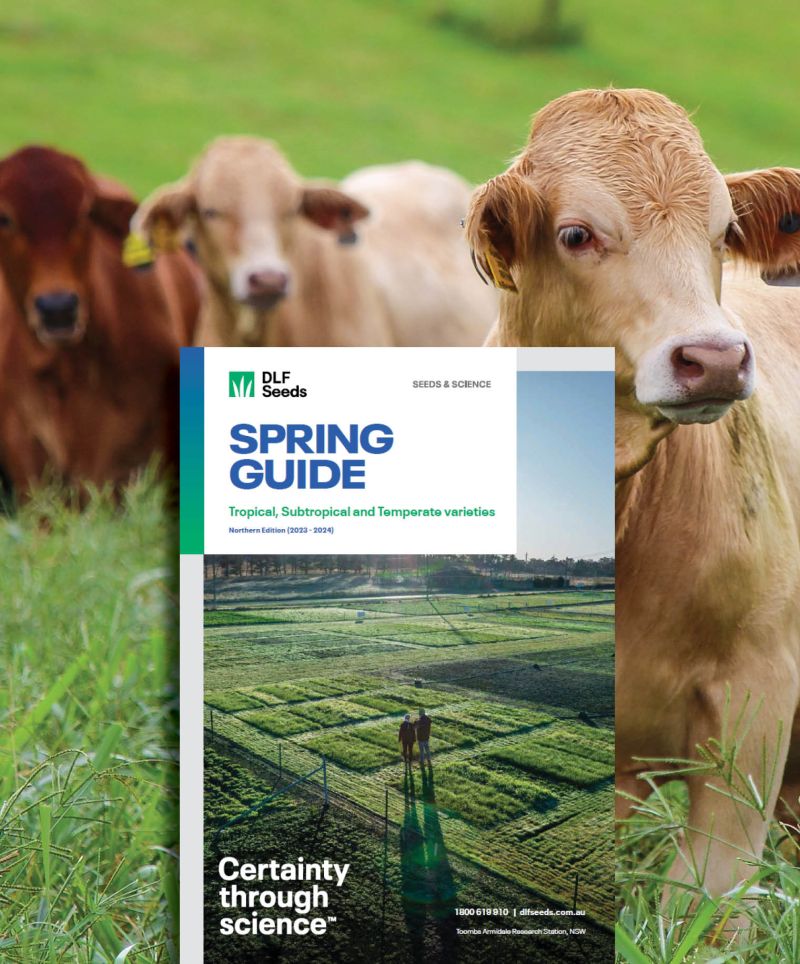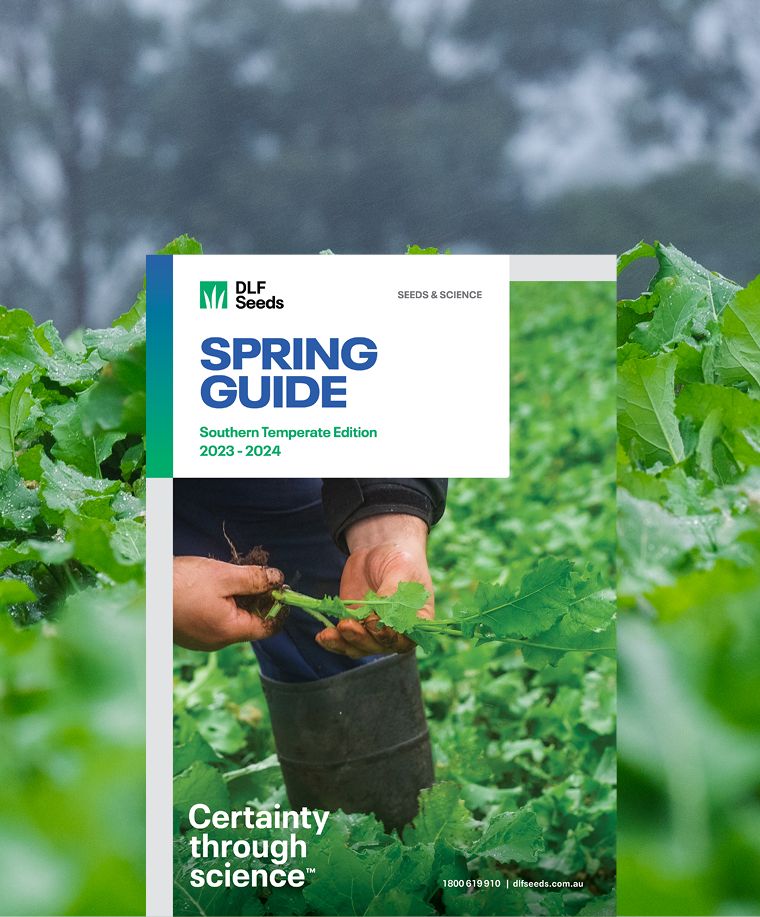Get in Touch
Contact Us
National team

Find Your Local Sales Agronomist
Choice has an upright growth habit with a large, uniform leaf for good utilisation, improved winter activity and persistence.This also improves the establishment of other species in a mix such as clovers and brassicas. Due to its improved winter growth, Choice exhibits quick establishment in the autumn and provides early grazing in the spring and later grazing into the winter.
Chicory is not suitable for hay if sown as a sole pasture.
Pasture seed sowing rate (sole): 6-10kg/ha
Pasture seed sowing rate (mixed): 2-8kg/ha
Choice chicory is an excellent option for growing lambs from weaning to their final liveweight target.
Typically, lambs on chicory grow at 200-350 grams/day and Choice can potentially support around 40 lambs per hectare through summer and autumn. It can provide multiple grazings for 2-4 years or more, particularly when planted with legumes.
Chicory has good protein levels (22-27% CP) and high energy, often testing over 12.5 MJME/kg DM when leafy. This quality does not deteriorate to the extent ryegrass does over summer; so in late summer and autumn, quality differences between the two species can be large, especially in a first year Choice crop.
.JPG&Format=jpg&Height=1200&Compression=80&Crop=5&DoNotUpscale=True)
This is the best way to realise the benefits of chicory because it provides the greatest amount of high quality feed over summer. It also allows for selection of suitable soil types, and grazing management that is specific for chicory. Seed is sown with or without white and red clover. A pure crop can also be useful for eradicating grass weeds (e.g. bent grass, couch) as grass-specific herbicides can be used over the crop.
Chicory germination and early vigour is very sensitive to soil temperature. Chicory is more sensitive than ryegrass to sowing depth and soil temperature. It establishes best when sown into warm soils (12°C+) at 10 mm in depth, where there are low amounts of competition from other plants in the first three months. Spring sowing is highly preferred, with late autumn planting to be avoided.
Weeds should be thoroughly eliminated before sowing as post establishment herbicides for chicory are limited. Many weeds can be controlled in the early stages of establishment with flumetsulam based herbicides at recommended rates. The addition of grass herbicides is also recommended in many instances; products like Clethodim can be used for grass specific control. It is vital that weed control is timed and applied at good water rates exceeding 150 L/ha of water. Weeds should be sprayed when they are approximately the size of a $1 coin.
In grass mixes where it is expected that pastures will require a hormone spray after establishment, chicory should be left out of the initial mix and chicory (at least 3 kg/ha) and clover seed spread or direct drilled just before grazing in spring. Soil fertility requirements are similar to those required by ryegrass/clover pastures. Take a soil test in the autumn before spring planting chicory as this allows time for lime to be applied and become effective. Nitrogen fertiliser improves stablishment of chicory, especially when temperatures allow for active growth.
If weeds are an issue, spray-drill annual ryegrass during autumn into paddocks that will be planted in chicory the following spring. This allows chemical control of weeds over the autumn (more effective time to target thistles). Using an Italian ryegrass from an autumn establishment for 18 months prior to spring sowing chicory helps the total feed supply (2 winters) and provides more time to target thistle control.
Chicory has been successfully established after cultivation or direct drilling (spray-drilling). Direct drilling may be more suitable on some soil types. In all cases careful review of all herbicide residuals for previous crop history should be noted as chicory is a susceptible species to a number of commonly used cropping herbicides.
Minimum 500mm rainfall per annum unless irrigated
 2024 Product Guide.jpg&Format=jpg&Width=800&Compression=80&Crop=5&DoNotUpscale=True)

